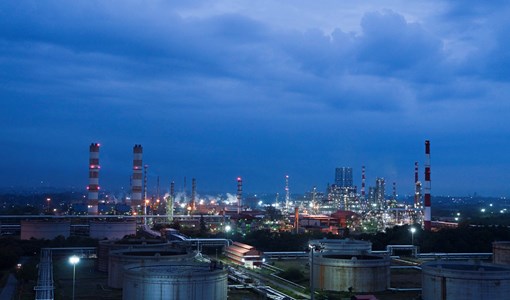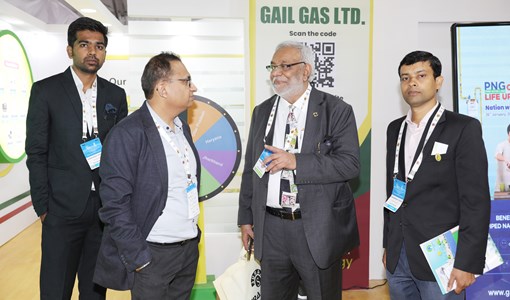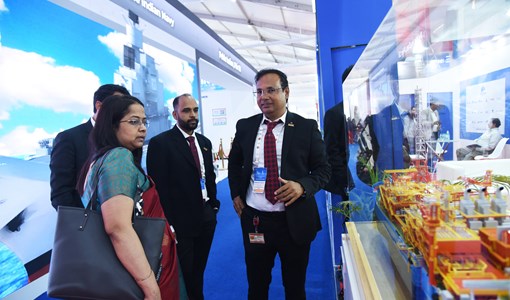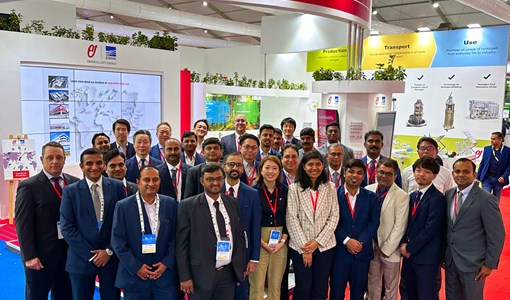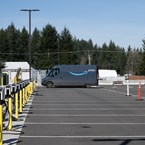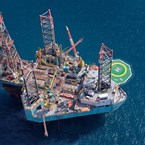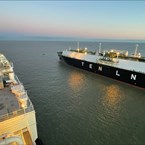Gas and LNG to fuel space exploration to the Moon and Mars
Jim Bridenstine, Administrator, NASA, on how the industry can boost the next generation of spaceflight
How can gas and LNG play a major role in the future of space exploration?
There are many opportunities for the gas and LNG industry to play a role in the future of space exploration, including NASA’s Artemis lunar programme and overall Moon to Mars exploration approach. Originally, NASA sought after high-purity methane and the gas industry’s capability to produce rocket fuel-quality material. We found only a limited number of providers capable of delivering high-purity methane, but the capability is there and could be expanded, if necessary. Methane’s mass and volume give it an advantage over less dense liquid hydrogen. However, methane is not the only gas that has been tested to fuel rockets.
Currently, our commercial partners primarily use LNG for the first stages of their launch rockets. LNG performs better than RP-1 (kerosene), and doesn’t require being stored in as large a fuel tank as liquid hydrogen does. LNG also is significantly easier to work with when storing and transporting the gas in cryogenic tanks because through cryogenic heat management the boiloff gas losses are minimised. These characteristics set up LNG to be widely used as fuel for launches and space exploration.
Blue Origin, United Launch Alliance, Boeing, and SpaceX all plan to have LNG fuel their first stage boosters to ensure their rockets overcome the aerodynamic forces of the atmosphere. When it comes to liftoff, the greater the weight of a rocket, the more thrust and power are required to overcome the Earth’s gravity. LNG and methane perform well as fuels without significantly increasing the weight of rockets. As NASA and industry partners look to send more missions to the Moon and Mars, there are more opportunities for the gas industry to become involved in all things space.
How strong are the links between NASA and the gas industry, especially in Houston?
Over the years, NASA has hosted different collaborations and projects with members of the gas industry, including Technip, Chart Industries, Shell, along with many others. Collaborations included technological advancements related to LNG cryogenics, thermal insulation systems, materials, and cryogenic testing, to name a few.
Not all projects were focused on space advancements. One group used NASA and Caltech technology to develop an efficient methanol fuel cell to power equipment at drilling sites. This technology eliminated the equipment that released gases, such as methane, into the atmosphere, giving us a cleaner environment. Today, many former NASA contractor engineers use their experience building rockets to develop cleaner energy technology, such as the coal gasifier, which harnesses the energy from coal with fewer environmentally harmful effects. Ties between the gas industry and NASA work together to better the world for all humanity.
How optimistic are you that the funding and willpower exists in the U.S. for further ambitious exploration of space, especially in the year of the 50th anniversary of the Apollo 11 mission?
The forward-thinking of American leadership in the 1960s enabled NASA and our country to accomplish what was previously thought impossible. Likewise, President Donald Trump is determined to unleash the full strength of American scientific and technological innovation. He has given NASA a clear goal to go back to the Moon, so we can prepare to take humanity’s next giant leap, sending astronauts to Mars. President Trump’s directive is not empty rhetoric. He has backed up his vision with the budget requests needed to accomplish this bold objective. The President’s determination to fund the Artemis programme combined with NASA’s commitment to perfect humanity’s knowledge and capability leaves me very optimistic about the future.
What do you see as the immediate goals for NASA, which can be accomplished in the next decade?
The Artemis programme’s success in landing the first woman and the next man on the Moon by 2024 will launch a new era of human space exploration. Our next lunar landing, however, is not about flags and footprints. President Trump has directed NASA to construct sustainable architecture on the Moon by 2028 so we can learn how to live on another world for long durations of time. And then we’ll take what we learn on the Moon, and go to Mars. Excitingly, we have many commercial and international partners that will help us best utilise American taxpayer money as an investment in the future.
What do you expect from appearing at Gastech 2019?
Gastech 2019 can provide new opportunities for space exploration given President Trump’s visionary direction to the send the first woman and the next man to the Moon by 2024. We are returning astronauts to the Moon, so that we can continue on to Mars. Without sustainable fuel sources that can be incorporated in space, the path to Mars will be limited by tank size and the maximum volume of fuel that can be carried. I hope to inspire collaboration with new partners and gas industry experts, so that we can make our next giant leap to Mars.
______
Jim Bridenstine will be delivering a keynote address on September 19 at 09.00 on “Exploring the role of LNG in powering the next generation of space exploration”
KEEPING THE ENERGY INDUSTRY CONNECTED
Subscribe to our newsletter and get the best of Energy Connects directly to your inbox each week.
By subscribing, you agree to the processing of your personal data by dmg events as described in the Privacy Policy.

Energy Workforce helps bridge the gender gap in the industry
Mar 08, 2024
EGYPES Climatech champion on a mission to combat climate change
Mar 04, 2024
Fertiglobe’s sustainability journey
Feb 29, 2024
Neway sees strong growth in Africa
Feb 27, 2024
P&O Maritime Logistics pushing for greater decarbonisation
Feb 27, 2024
Oil India charts the course to ambitious energy growth
Jan 25, 2024
Maritime sector is stepping up to the challenges of decarbonisation
Jan 08, 2024
COP28: turning transition challenges into clean energy opportunities
Dec 08, 2023
Why 2030 is a pivotal year in the race to net zero
Oct 26, 2023
Low carbon hydrogen holds the key to achieving net zero
Sep 29, 2023Partner content

Ebara Elliott Energy offers a range of products for a sustainable energy economy

Essar outlines how its CBM contribution is bolstering for India’s energy landscape

Positioning petrochemicals market in the emerging circular economy

Navigating markets and creating significant regional opportunities with Spectrum





